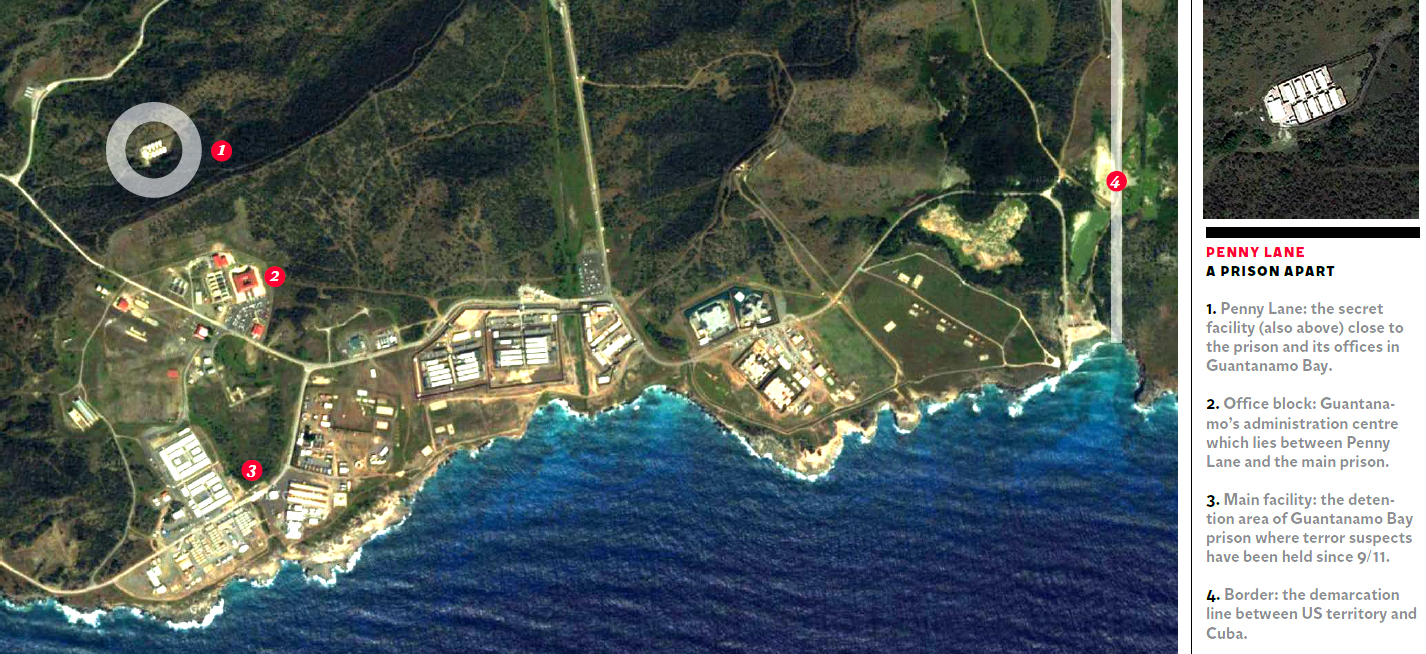Revealed: Guantanamo suspects were 'turned' into double agents at secret facility
CIA paid millions of dollars to small band of inmates who were recruited to spy on al-Qa’ida leaders

The CIA was doing more than just incarcerating and interrogating the hundreds of terror suspects who were rounded up and delivered to the fortified Guantanamo Bay military prison in a remote corner of Cuba in the wake of the 9/11 attacks. In a few cases it was also trying to turn them into double agents.
Click image above to enlarge graphic
The programme, run from a secret facility within Guantanamo Bay which has never been revealed until now, ran from 2002 until 2006 and drew the personal attention of George W Bush who was then in the White House.
A number of terror suspects were successfully turned and sent back to their countries in the hope that they would reconnect with the al-Qa’ida network and feed information back to the CIA to help it locate and kill high-profile targets, according to an investigation by the Associated Press.
Only those believed still to have legitimate contacts with the top hierarchies of terror group were considered for the secret programme. Once identified, they were tempted by an assortment of inducements, most notably large sums of cash as well as promises from the CIA that their safety and that of their families would thereafter be assured, including with new false identities.
The money for the men, which over time came to millions of dollars, was drawn from a secret CIA fund called the “Pledge”. More prosaically, these special recruits were offered equally special privileges while they remained at Guantanamo Bay, including being taken out of the main cell blocks and moved to a group of small, relatively cosy bungalows set several hundred yards away beyond a screen of shrub and cactus.
The cottages, which went by the codename Penny Lane, had their own patios, kitchens and private showers. Perhaps most tempting of all, they featured proper beds with regular mattresses.
The Penny Lane moniker was derived from The Beatles song, in a nod to the fact that the main cell block complex had already become known as “Strawberry Fields”, because of the next word in the chorus – “forever”. More than 10 years later some of the detainees are still incarcerated in them with little prospect of release.
Some also took collectively to calling the hidden cottages the “Marriott”, because of their relative comfort. Allegedly, the Penny Lane residents were even allowed to access pornography if they so requested.
There was no comment today from the CIA. Details of the programme, which came laden with heavy risks, were pieced together by the Associated Press following interviews with numerous current and former US officials who were familiar with it. They, however, spoke on condition of anonymity. Others familiar with Guantanamo Bay did not express particular surprise.
“Of course that would be an objective,” noted Emile Nakhleh, a former top CIA analyst who helped assess detainees, without discussing the programme further. “It’s the job of intelligence to recruit sources.”
“I do see the irony on the surface of letting some really very bad guys go,” David Remes, a lawyer for a group of Yemeni detainees at the facility, told the AP. He too, however, saw what the CIA was hoping to achieve. “The men we were sending back as agents were thought to be able to provide value to us.”
Mr Bush was sufficiently intrigued to speak at the White House directly to one CIA official who was involved in Afghanistan, where the suspects-turned-agents were sent to upon their release from Penny Lane. By contrast, President Barack Obama is said to have raised concerns about any of those who were supposedly still helping the CIA when he took office in 2009 and ordered a review of all such operations.
If the programme remained a heavily guarded secret, it was surely because of the rather obvious risks associated with it, notably that the men, once released would immediately take part in new attacks against the US and publicly reveal their journeys through Penny Lane to embarrass Washington. There was also concern that if any of them identified a target for drone attack they might themselves have been killed even while being in the pay of the CIA.
While sources said that the programme did result in some successful CIA assassinations of high-priority targets, they conceded that in other cases men simply vanished upon release never to be heard from again. They said there is no evidence, however, that any of them turn around again and killed any Americans.
The treatment of inmates by the US at Guantanamo Bay has repeatedly been condemned by human rights groups. The facility remains a political thorn in the side for President Obama, who has failed to fulfil a pledge made when he was first elected to close it down quickly. He was stymied in particular by resistance on Capitol Hill to any notion of terror suspects being moved to US soil for trial in the regular court system.
Public attention will be directed back to Guantanamo Bay next year in particular with the expected start of the trial of Khalid Sheik Mohammed, the alleged mastermind of the 9/11 attacks on America.
Join our commenting forum
Join thought-provoking conversations, follow other Independent readers and see their replies
Comments